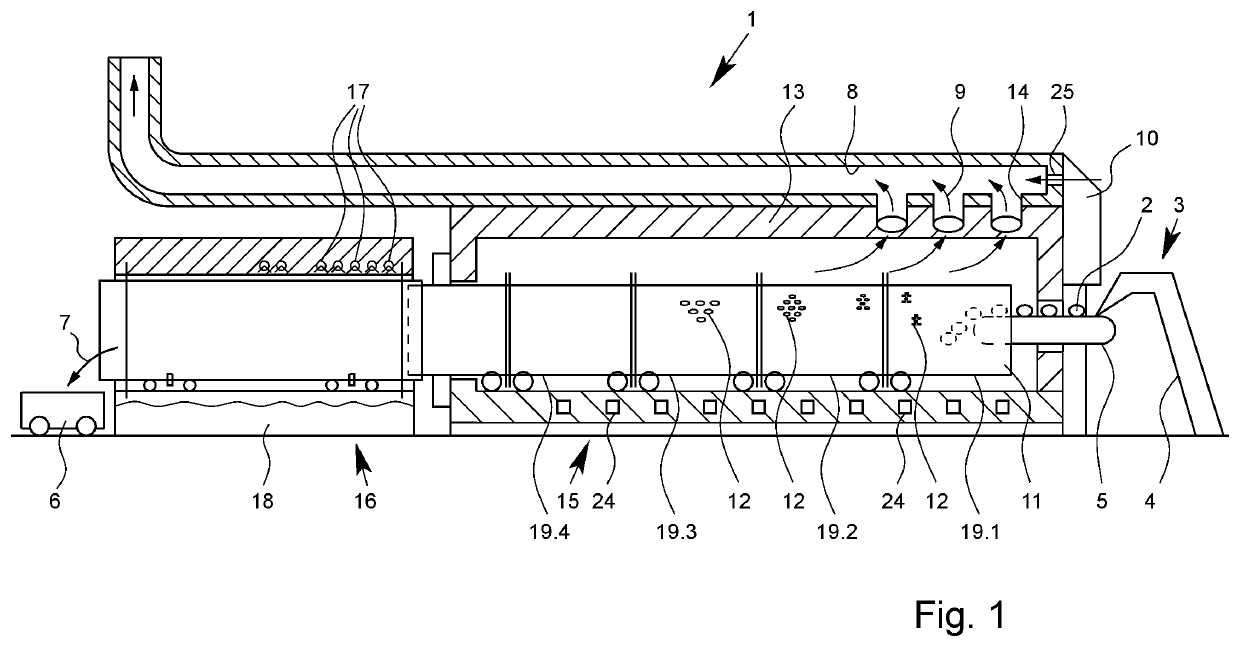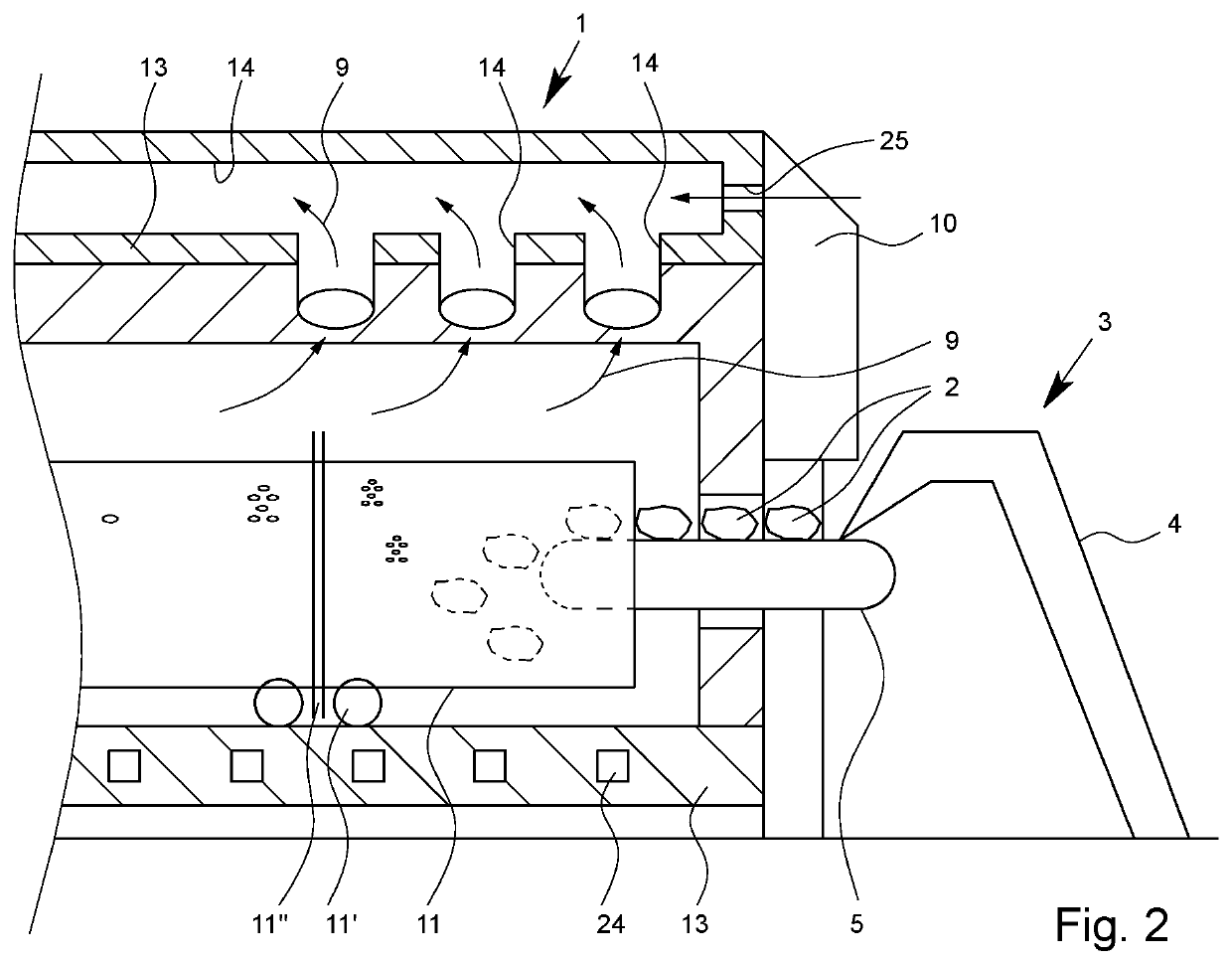Pyrolysis system and method of recovering carbon fibres from carbon-fibre-containing plastics
a carbon fibre and plastics technology, applied in the field of carbon fiber recovery (recycling) of carbon fibers from carbon fiber-containing plastics, can solve the problems of uneconomical disposal of cfp-containing plastic scrap in landfills, complicated and costly production of primary carbon fibers from carbon-containing starting materials, and high final product cost, so as to reduce the mechanical properties of recycled carbon fibers, reduce the effect of cfp-containing plastic scrap disposal and high quality
- Summary
- Abstract
- Description
- Claims
- Application Information
AI Technical Summary
Benefits of technology
Problems solved by technology
Method used
Image
Examples
working examples
[0195]The particular advantages of the invention are described below for the example of the recovery (recycling) of carbon fibers from carbon fiber-containing materials.
A) Process for Recycling Carbon Fiber-Containing Plastics
[0196]Carbon fiber-reinforced plastic scrap (CFP scrap) as is obtained, for example, in aircraft construction (e.g. aircraft airfoils) or from wind power turbines (e.g. wind blades) is used as carbon fiber-containing plastics. If the pieces of CFP scrap have dimensions larger than the opening of the input station of the pyrolysis plant, comminution of the CFP scrap is carried out by means of cutting apparatuses which are known per se to those skilled in the art before recycling.[0197]The recycling of carbon fibers from the above-described carbon fiber-containing scrap in the form of prepregs is carried out in the pyrolysis plants indicated in table 1.
[0198]
TABLE 1pyrolysis plants used for recyclingNo.pyrolysis plant1*pyrolysis plant having an indirectly heated ...
PUM
| Property | Measurement | Unit |
|---|---|---|
| temperature | aaaaa | aaaaa |
| temperatures | aaaaa | aaaaa |
| temperatures | aaaaa | aaaaa |
Abstract
Description
Claims
Application Information
 Login to View More
Login to View More - R&D
- Intellectual Property
- Life Sciences
- Materials
- Tech Scout
- Unparalleled Data Quality
- Higher Quality Content
- 60% Fewer Hallucinations
Browse by: Latest US Patents, China's latest patents, Technical Efficacy Thesaurus, Application Domain, Technology Topic, Popular Technical Reports.
© 2025 PatSnap. All rights reserved.Legal|Privacy policy|Modern Slavery Act Transparency Statement|Sitemap|About US| Contact US: help@patsnap.com



